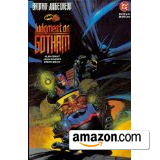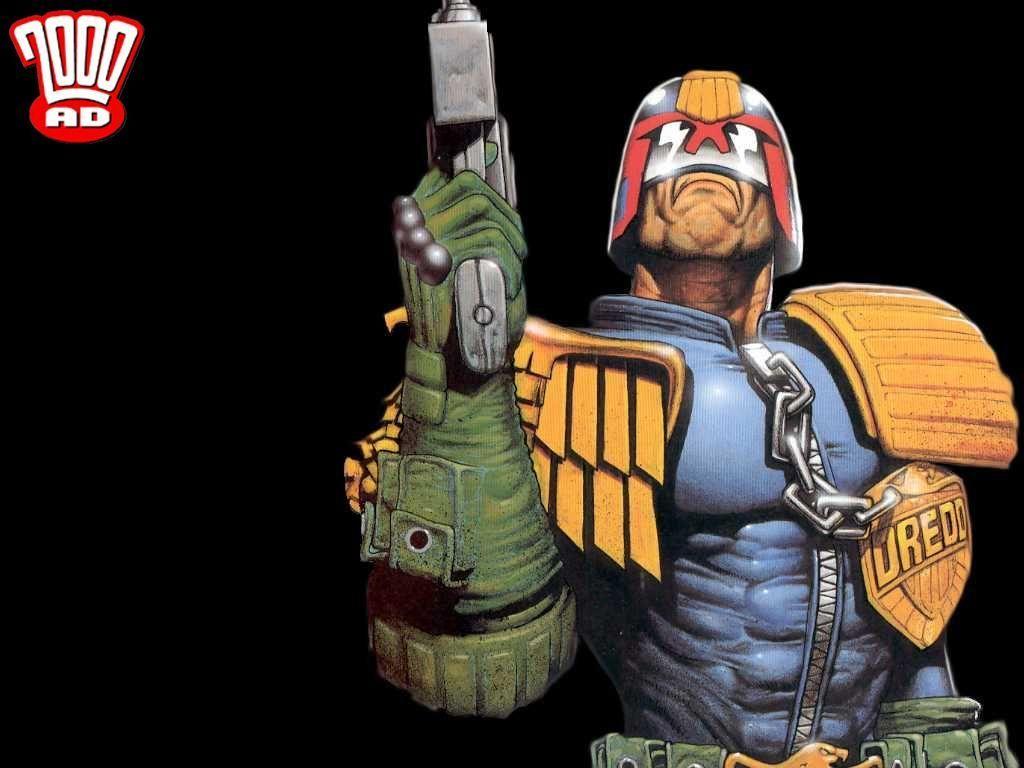
Not that it mattered to 14-year-old Caleb, who was mainly entranced by the art of Simon Bisley, who presented an exaggerated, heavy metal album cover world of Gotham City and Mega-City One, with garish, cartoony characters covered in realistically rendered muscles, flesh and textures.

If Batman comics were usually meant to be read as serious, Judge Dredd comics weren't necessarily meant to be un-serious, but they were often written, drawn and intended with tongue-in-cheek, with parodic elements, with jokes. I loved it, although re-reading it many years later, I see that I missed a lot of elements of it, particularly the fact that Dredd and the comics world that emanates around him isn't meant to be a straight one in the manner that Batman and his Gotham are. It was one of my earlier exposures to comic book Batman, my first exposure to Batman villain The Scarecrow and, of course, my very first exposure to Judge Dredd and the members of his supporting cast that appeared within the story: Psychic fellow officer of the law Judge Anderson, archenemy Judge Death, and less-arch eneemy Mean Machine Angel. That sure sounded like something to read! They don’t like each other, they don’t trust each other’s methods but they do make a great team.One of the first comic books I ever read, probably among the first dozen at the most, was the 1991 "prestige format" special Batman/Judge Dredd: Judgement On Gotham, a fully-painted, seemingly once-in-a-lifetime meeting between the most prominent and popular American superhero (who just had a major motion picture in theaters a few years ago, and had another one due the following year) and a character I was told was his British equivalent. However, whilst it’s fun, this book belongs to Dredd and Batman, the two grumpiest men in comics. The book’s rounded out by the Dredd/Lobo crossover which has some particularly great art and is about as sensible as you might think. “Die Laughing” is the perfect, epic summer blockbuster blow off to the series of stories huge, demented, hideously violent and immensely fun.


Whilst the Joker as a Dark Judge doesn’t quite work, brilliantly that’s acknowledged in the story and it’s touches like that, along with the endless variety of hideous things the Dark Judges do to people, that make it huge fun to read.

However, the whole thing pales in comparison to seeing Batman, astride a Lawmaster, side by side with Dredd. There are some lovely full splash pages and some cheerfully grotesque moments, especially the rapid degeneration of one of Mortis’ victims. Fabry and Murray’s gloriously sinewy, burly art is the perfect bookend to Bisley’s work in the first story and they clearly relish showing Mega City 1 off in all its demented glory.


 0 kommentar(er)
0 kommentar(er)
